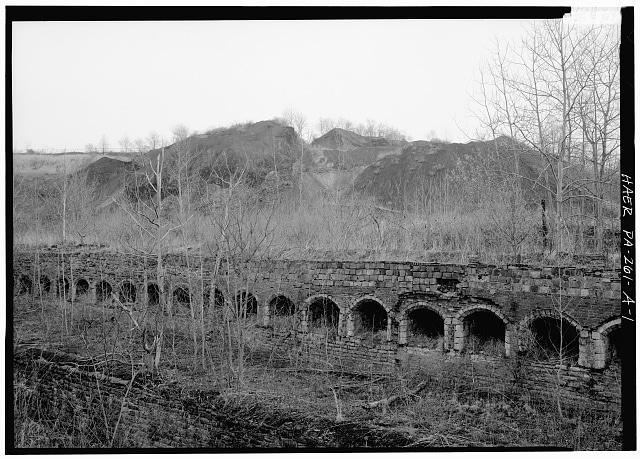Coke & Coke Ovens
The invention of the beehive oven was a major advance in the production of coke. Beehive ovens were large masonry domes and named according to their shape. Constructed in long rows for ease of loading and unloading, workers would bring the coal from the nearby mines, dump the coal in the opening in the top, ignite the coal and seal the ovens to let the coal smolder.









